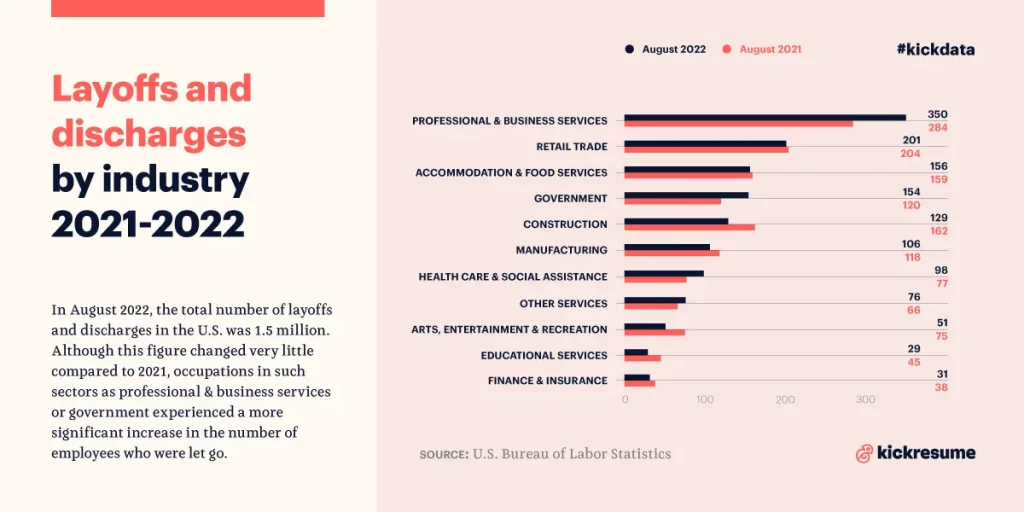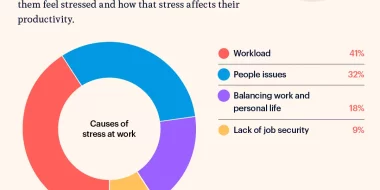Layoffs and Discharges by Industry in 2022
There’s no doubt that being laid off can be precisely the push you need to move forward — to a better-paying or less stressful job. Nevertheless, for most people, it’s also perceived as one of the most traumatic experiences. And it can certainly leave one demotivated or numb.
One way or another, layoffs and discharges have been increasing continuously since the 1970s. And in August 2022, there were 1.5 million layoffs and discharges across the U.S., which increased just little (by 91,000) compared to August 2021.
There are, however, certain industries such as professional & business services, state & local government jobs, and even healthcare that did record a more significant increase in layoffs compared to other sectors.
Professional and business services recorded 350,000 layoffs
Professional and business services suffered 350,000 discharges in 2022 — 66,000 more than it did in 2021. So what exactly does this sector include? From lawyers through accountants to software engineers and scientists, professional and related occupations basically encompass jobs that provide specialized services for others.
The U.S. Department of Labor states that professional occupations add up to nearly 60% of all jobs in the United States and in 2014 it accounted for 25% of employment growth.
Sadly, this was not the only industry experiencing an elevated number of discharges. Although retail trade and accommodation & food services sectors follow in the list of industries with highest layoff rates, the number of discharges in the two remained nearly unchanged compared to 2021.
What contributed to the overall number of layoffs in August 2022, however, were the increased rates of discharges in government jobs (by 34,000), healthcare & social assistance (by 21,000), and other services (by 10,000).
Why do layoffs happen?
Based on the BLS report from 2022, 38 percent of long-tenured workers lost or left their jobs due to company closings. An additional 31 percent were displaced because their position was abolished and a remaining 31 percent were discharged due to insufficient work.
Construction experienced a significant decline in layoffs
When we look at a major drop in respective layoffs, it surely looks like the construction sector did something right. To be precise, the number of people who lost their jobs in construction went down from 162,000 in August 2021 to 129,000 the following year.
We can only hope for a downward trend in layoffs for the years to come. Although they’re rooted in business as a cost-lowering solution, they may be effective just for a short period of time.
But in the long run, reducing headcount may put at stake the reputation of a company, their product quality, or workplace safety.



